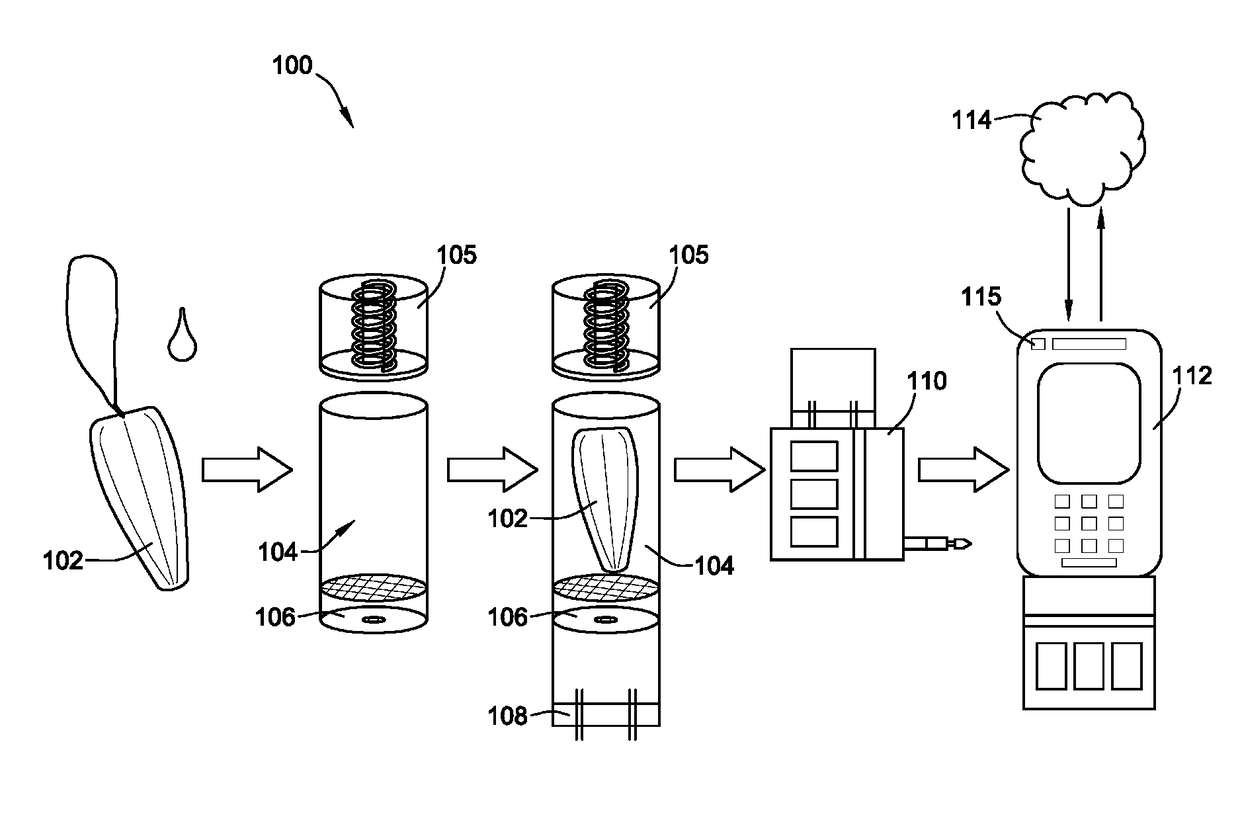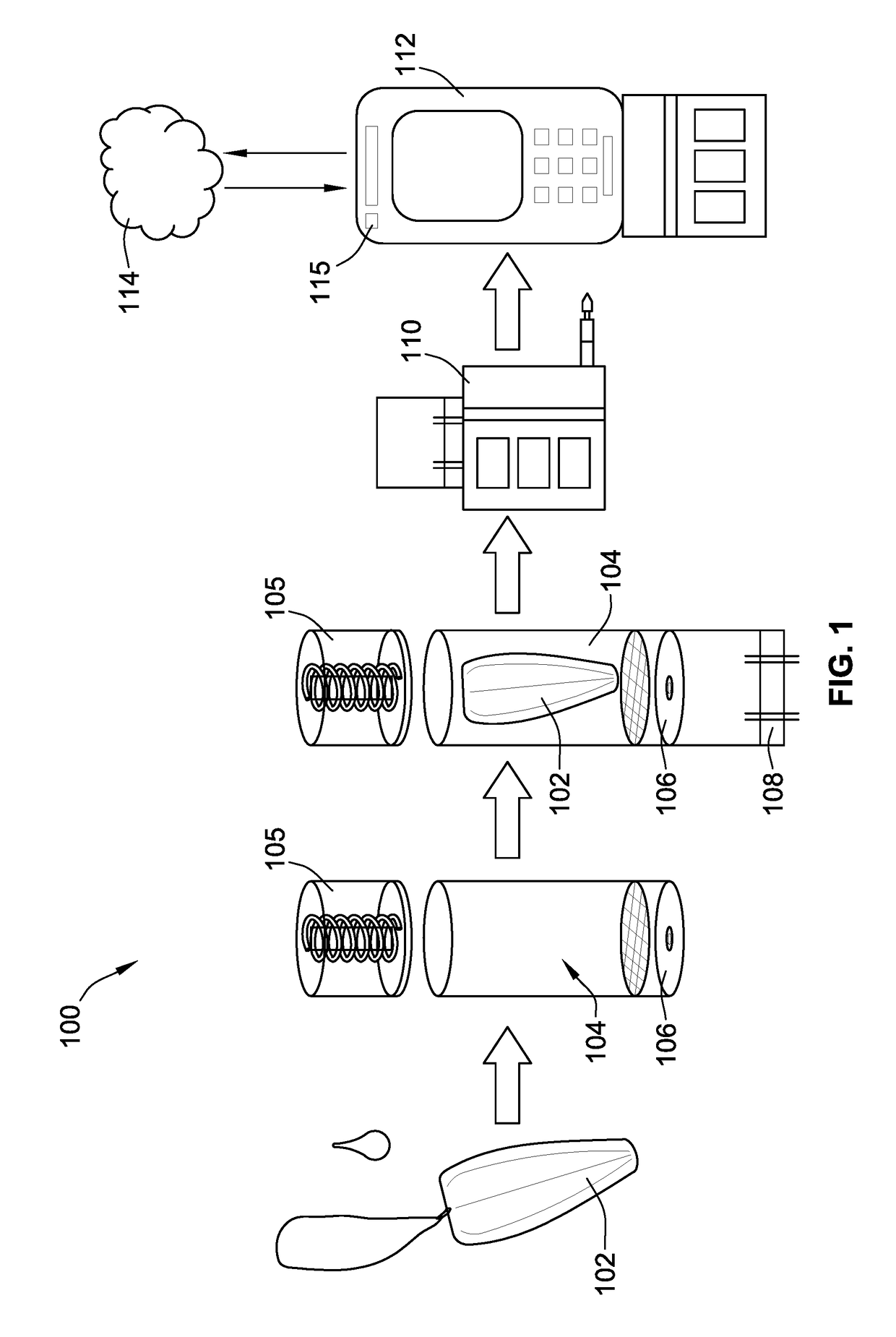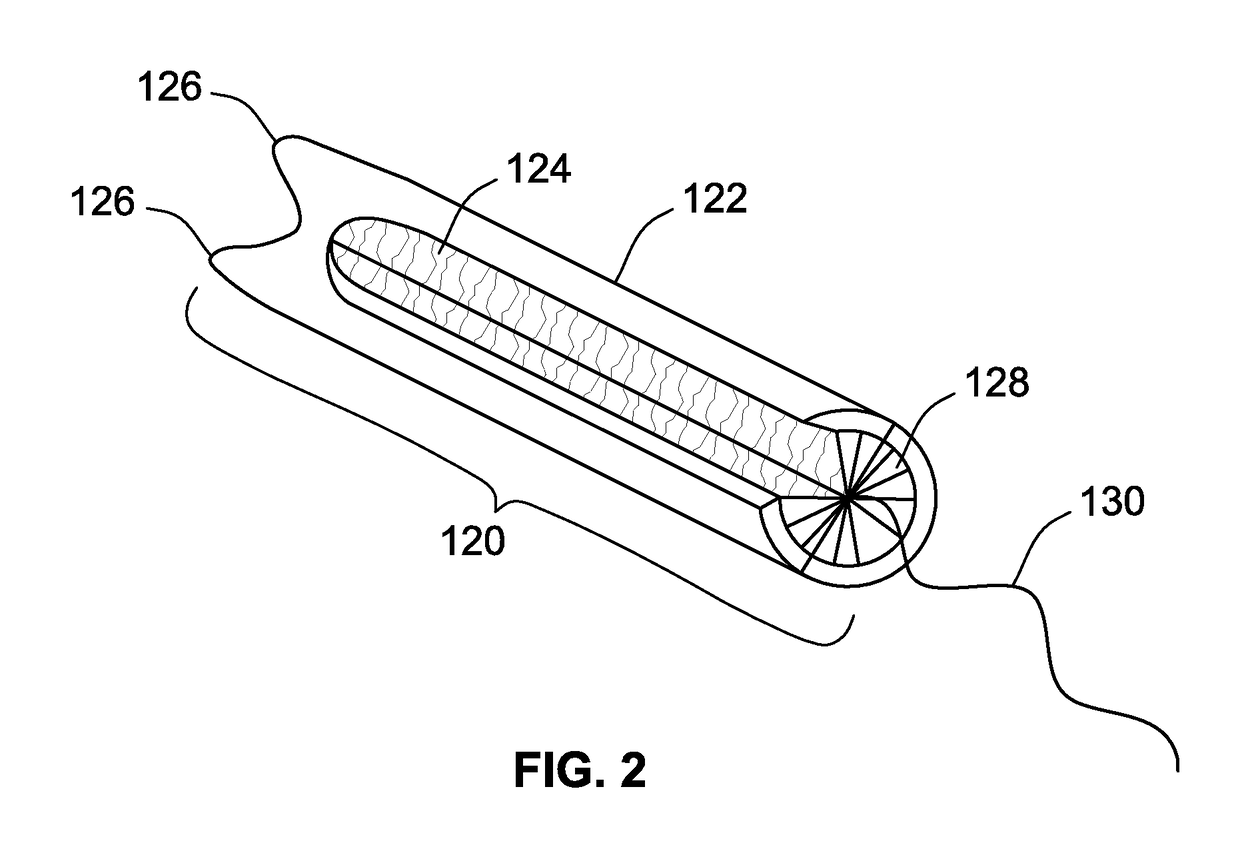System and method for monitoring health based on collected bodily fluid
a bodily fluid and system technology, applied in the field of medical systems for detecting and monitoring health conditions, can solve the problems of serious health problems, difficult to obtain accurate statistics on sexual assault, pregnant women's increased risk of passing stis to their babies, etc., and achieve the effect of maintaining sample quality
- Summary
- Abstract
- Description
- Claims
- Application Information
AI Technical Summary
Benefits of technology
Problems solved by technology
Method used
Image
Examples
example 1
[0247]Gonorrhea is an infection caused by the bacterium Neisseria gonorrhoeae. Transmission of this pathogen occurs during vaginal, oral, or anal sex (Moran, Clin. Evid. 200:1604; 2007). While men often experience painful urination upon infection, women are mostly asymptomatic. If left untreated, gonorrhea can cause local disease such as pelvic inflammatory disease (PID), or can also affect other parts of the body, such as the joints and heart valves.
[0248]Traditionally, gonorrhea was diagnosed with gram stain and culture; however, newer PCR-based testing methods are becoming more common. The USPTF recommends screening for gonorrhea in women at increased risk of infection, which includes all sexually active women younger than 25 years (Meyers et al., Am. Fam. Physician 77:819-824; 2008). Screening for gonorrhea in women who are or intend to become pregnant, and who are found to be at high risk for sexually transmitted diseases, is recommended as part of prenatal care in the United S...
example 2
[0251]Chlamydial is a common STI that is caused by the bacterium Chlamydia trachomatis. Transmission occurs during vaginal, anal, or oral sex, but the bacterium can also be passed from an infected mother to her baby during vaginal childbirth. It is estimated that about 1 million individuals in the United States are infected with this bacterium, making chlamydia one of the most common STIs worldwide. Like gonorrhea, chlamydial infection is asymptomatic for a majority of women. If symptoms are present, they include unusual vaginal bleeding or discharge, pain in the abdomen, painful sexual intercourse, fever, painful urination or the urge to urinate more frequently than usual. Of those who develop asymptomatic infection, approximately half will develop PID. Infants born to mothers with chlamydia may suffer from pneumonia and conjunctivitis, which may lead to blindness. They may also be subject to spontaneous abortion or premature birth.
[0252]Diagnosis of chlamydial infection is usually...
example 3
iasis
[0254]Trichomoniasis is considered the most common curable sexually transmitted disease. In the United States, an estimated 3.7 million people have the infection, but only about 30% develop any symptoms of the disease (Center for Disease Control fact sheet, 2015). In women, the most commonly infected part of the body is the lower genital tract. Nearly 70% of infections are asymptomatic. Not only can infection with Trichomonas increase one's risk of contracting and spreading other STIs, pregnant women with trichomoniasis are more likely to go into preterm labor, but also babies born to infected mothers are more likely to have officially low birth weight—less than 5.5 pounds (CDC fact sheet, 2015). Trichomoniasis can also lead to pelvice inflammatory disease, which may lead to infertility if untreated.
[0255]Diagnosis of Trichomoniasis includes a visit to the doctor's office, a physical exam, and sampling of vaginal secretions by a wet preparation test to visualize bacterial flage...
PUM
 Login to View More
Login to View More Abstract
Description
Claims
Application Information
 Login to View More
Login to View More - R&D
- Intellectual Property
- Life Sciences
- Materials
- Tech Scout
- Unparalleled Data Quality
- Higher Quality Content
- 60% Fewer Hallucinations
Browse by: Latest US Patents, China's latest patents, Technical Efficacy Thesaurus, Application Domain, Technology Topic, Popular Technical Reports.
© 2025 PatSnap. All rights reserved.Legal|Privacy policy|Modern Slavery Act Transparency Statement|Sitemap|About US| Contact US: help@patsnap.com



